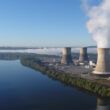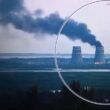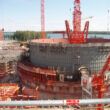Correct and complete is the norm
By Andreas Persbo, November 26, 2012
No one is trying to argue that the present is the past. At the same time, it is fatuous to declare that history is irrelevant for contemporary policy choices, or for the interpretation of law. Law is decided by policy, and policy is often determined by experience. Iran has been found in non-compliance with its safeguards agreement, and this has colored the debate over the past decade.
The scope of the agreement is, as I noted in Round One, not limited to material declared by the state; it also includes material that should be declared. Borrowing from the director general: “the system such as it had developed up to the Iraqi case, had limited capability to deal with completeness. This was the result of practical, rather than legal, considerations.” Since then, the agency has taken steps to strengthen safeguards.
These steps do not, in any way, mean that the IAEA cannot investigate the completeness of state declarations absent in an Additional Protocol. Such an interpretation is even rejected by the IAEA membership, which, in the latest safeguards resolution, noted “that the implementation of comprehensive safeguards agreements should be designed to provide for verification by the Agency of the correctness and completeness of a State’s declarations.” The General Conference sets policy, and I cannot find anything in its records that indicates a state objected to this formulation. Dan Joyner’s argument appears to be deeply flawed: It not only goes against the apparent majority view on safeguards implementation, it also goes against the views of member states, including Iran.
It is important to be accurate in a debate, and Joyner has failed to be so. At no point has the IAEA director general, neither past nor present, “consistently confirmed that all safeguarded material in Iran is currently in peaceful use” as Joyner confidently declares. Rather, they have stated that the agency has been able to “verify the non-diversion of declared nuclear material in Iran” or that it “continues to verify the non-diversion of declared material.”
The difference is fundamental. What the agency is saying is that it can confirm that all material declared by Iran is where Iran says it would be. The IAEA does not say that all material in Iran is accounted for. It cannot make this statement unless Iran provides them with further access under the Additional Protocol. Regrettably, the agency draws a similar conclusion for more than 50 other member states. When the IAEA is able to assure the absence of undeclared nuclear material and activities for each of these states, it will be able to draw a conclusion about the absence of undeclared material. Not before.
Finally, no one likes to have words placed in one’s mouth. I have made no implied argument about the role of the Security Council in safeguards implementation, as Joyner alleges. Since he brought it up, however, it suffices to say that the council has played a minor role as far as safeguards are concerned. The council, as Joyner well knows, has simply decided that Iran should take those steps identified by the IAEA Board of Governors. This hardly amounts to “deputization.” I therefore leave Joyner’s underhand argument without further consideration.
Topics: Nuclear Energy
Share: [addthis tool="addthis_inline_share_toolbox"]














